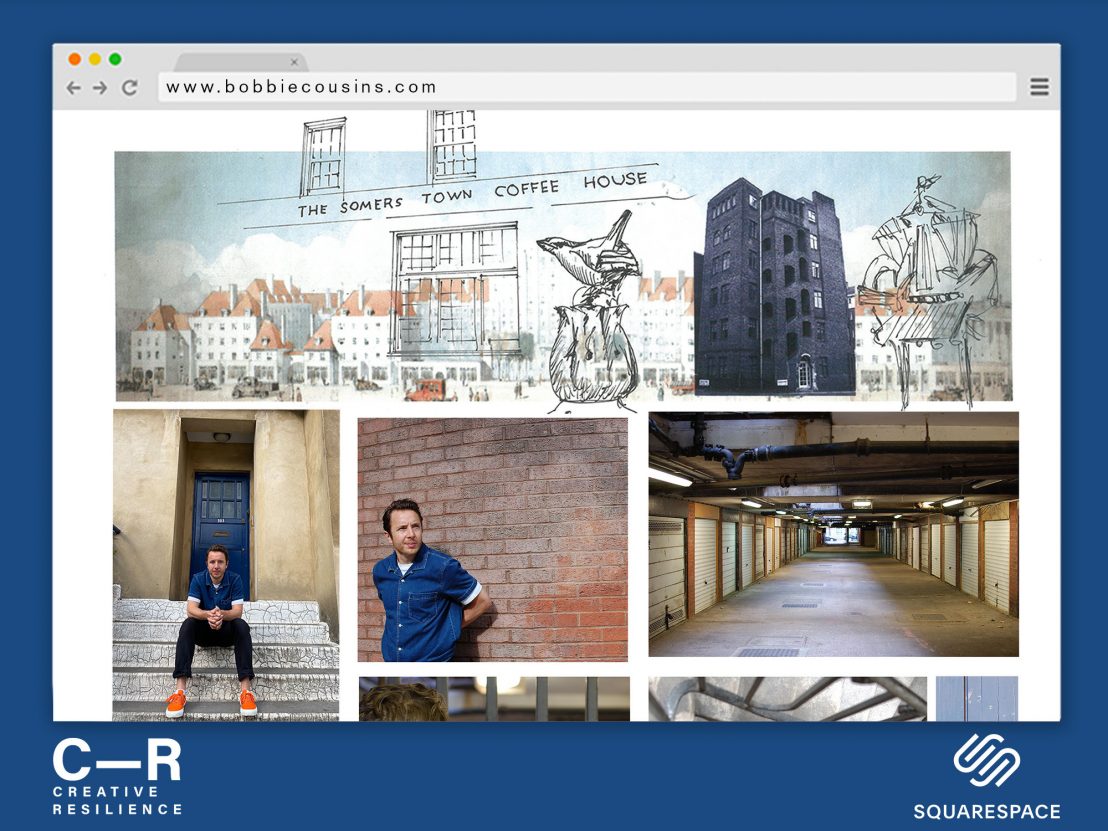
Surviving the perils of solo creativity is tough. In the latest instalment of our series supporting artists through lockdown, Bobbie Cousins evokes a world that’s seldom seen.
This story is part of Creative Resilience, an editorial series produced in collaboration with Squarespace.
“The process can start with just a texture, or with just a building, or a sense of place.” I’m standing with production designer Bobbie Cousins on the corner of Grafton Street in London’s Somers Town. “Sometimes there’s a script and sometimes there isn’t,” he says, “either way, it’s about exploration, about delving into the ideas through the surfaces of things. I then go away and piece together a texture – and that then becomes a colour palette, or a sketch of a set.”
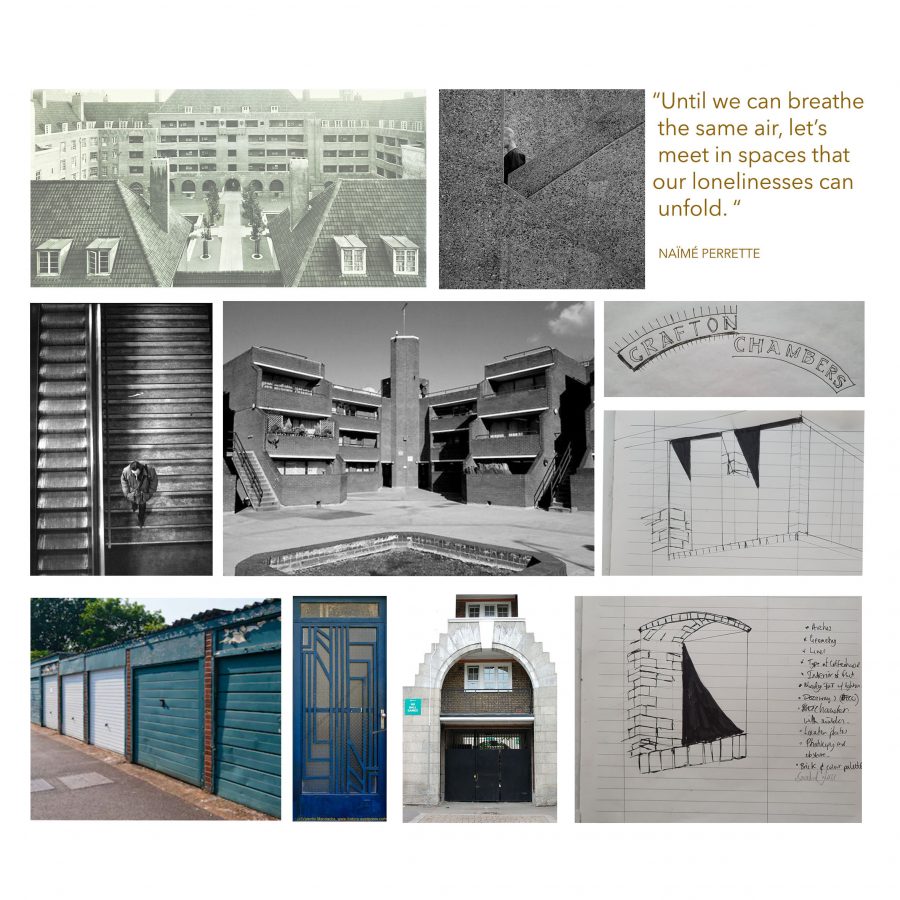
Somers Town is a textured neighbourhood through which, even if you’re a native Londoner, you probably haven’t passed. It’s tucked to the east of Euston Station, to the north and the west of St Pancras and the British Library, and south of Camden. It’s one of those increasingly rare London corners where time and the process of gentrification appears to have frozen. “When I come across a place like this,” says Bobbie, “there’s some kind of shift in me, and I start thinking of story and character. There’s something about the juxtapositions, the strangeness of discovered places, that I love.”
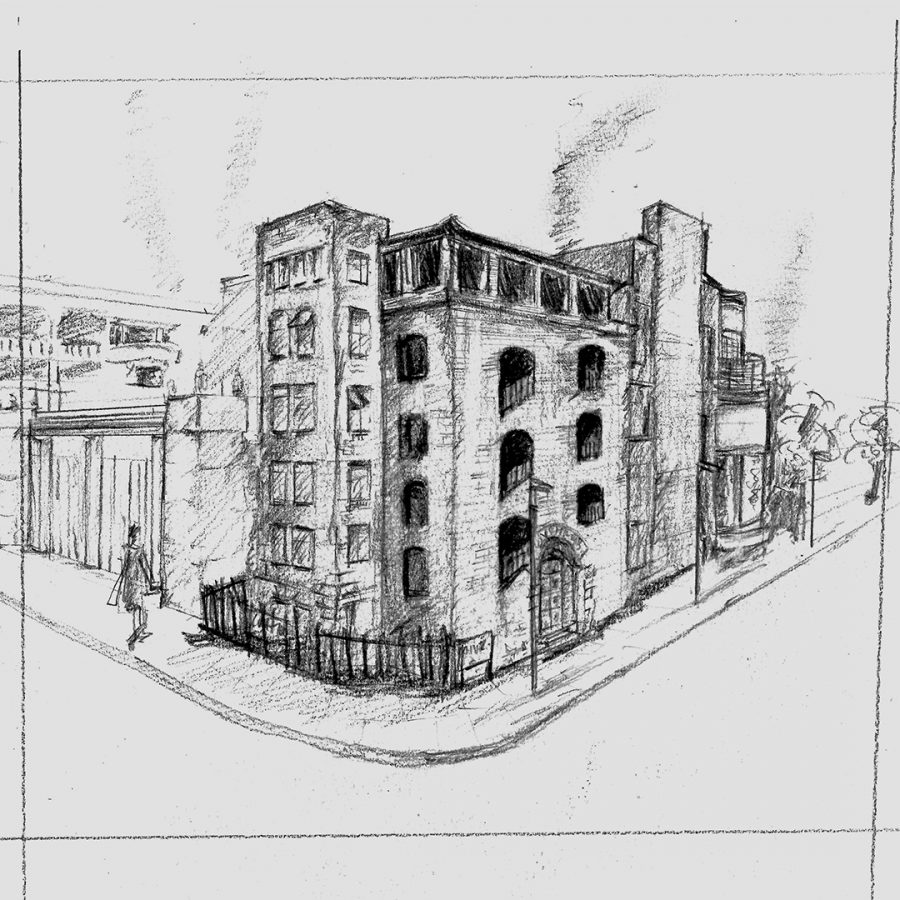
Red Brick Peabody estates dating from the Victorian era are punctuated in the Somers Town landscape with modernist low-rises with subterranean garage spaces and gardens bursting beautifully into bloom this early June. Describing the periphery to the north and the east are elegant Georgian terraces and Villas. Here on the southern extremity of the neighbourhood up against the strangely quiet, locked down murmur of the Euston road, estates that hint at faded art deco face the familiar London constellation of kebab houses, corner shops and boozers.
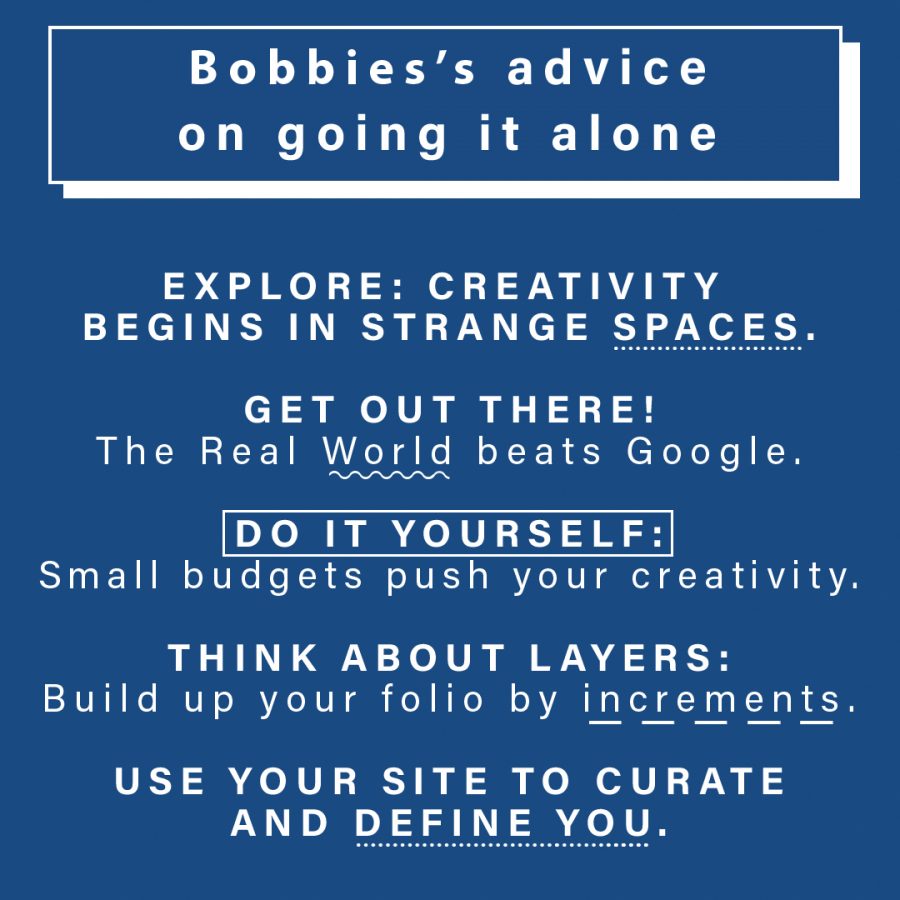
Get creative with your own Squarespace site
Use the code LWLies for a discountWe’re looking at Grafton Chambers, a six-storey, yellow-brick apartment building gilded with arches and wrought iron railings that guard dark balconies and porches. “There’s a feeling of… foreboding that I get from this sort of space,” he says, “and that’s what I’ll try to evoke in my response to the idea.”
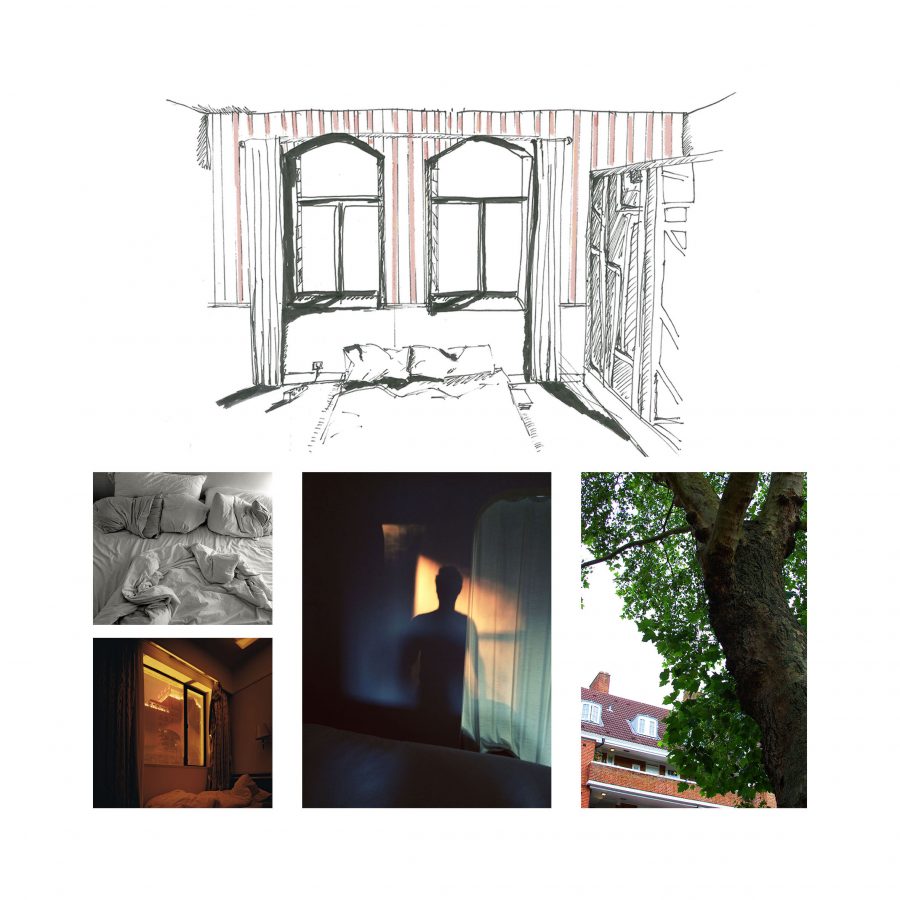
The 34-year-old Manchester native is in the middle of a developing trajectory in the art departments of film and TV. After school and some time on the road, he did art foundation at Manchester Met and then went on to Nottingham Trent University to study Fine Art. “It was a really great introduction to working on film,” he says. “I realised at uni that as well as making something, it was great to have the payoff of a film that went out there in the world. There is something amazing about creating something in three dimensions and then seeing it part of this wider thing that becomes part of peoples’ lives.”
Bobbie made his debut making and dressing sets on cult comedy series Father Ted’s Christmas Special, and he’s most proud of his production design work with director Georgia Parris on the beautifully textured dance drama Mari. “The experience of making things and working with characters and then seeing that develop on screen, that grew very gradually,” he explains. “I wanted to be able to apply the art practice that I had developed into a real life situation on set.”
In Peter Strickland’s feature film In Fabric, Bobbie served as Supervising Art Director. “I was able to get deeply involved in all aspects of the design in the evocation of this made-up world, from special effects and prosthetics and sets to lighting and costume. It brought together so many collaborative processes. That experience made me see that this was the direction I’d like to go in”.
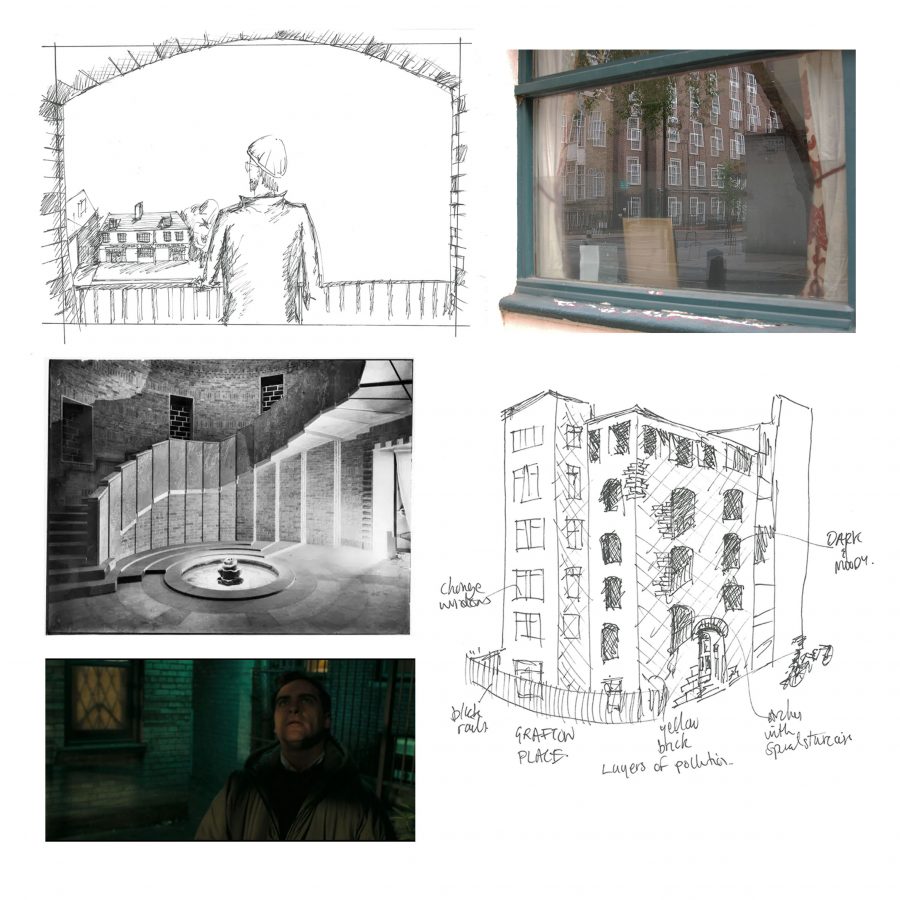
Commercial projects and promos are the meat and drink that hone the craft. “There’s an intensity to working on smaller productions that’s invaluable,” he says. “You have to be incredibly focused and resourceful. It pushes you to come up with really creative solutions.” One of those solutions was making a fortune telling 3D model of Ian Brown for King Monkey’s promo. “I must find out where Ian’s head is right now. That is an artefact I wish I had been able to keep.”
During the lockdown Bobbie, like so many creatives, has been aching to work on a live production. “I’ve been imagining being able to have the opportunity to build every set, to really create the world. But these past months I’ve been finding myself increasingly drawn to the creative process itself, even though it’s been impossible for anyone to work on live projects. I’ve been thinking about place and form and texture. Spending time here in Somers Town, I can feel the process of making a piece of work beginning. Finding a space engages you and creates feelings. Immersing in an imaginary space is an enveloping experience that leads to the work itself.”
The enforced hiatus in production has also created an opportunity to hone his presence on the web. “I tried all the other ways of making a website,” he says, “but it wasn’t until I got involved with Squarespace that it became something that really helped me define what it was that was my speciality. I’ve used Squarespace for 10 years. It made me feel as if I was a really good coder, with all the templates and the tools on the back end. Now, my website has really become a way to curate my work and to show the thread through all the things I’ve done.”
In building this space, the creative process itself has become clearer to Bobbie. “I’m able really easily to adapt it all the time to what makes me feel good when I open up my web page… and now I can do all this via the app on my phone.”
If you are ready to share your vision with the world? Start building today: use the code LWLIES for a discount on a new Squarespace website here.
Read more stories from our series on Creative Resilience, in partnership with Squarespace.
Published 24 Jun 2020
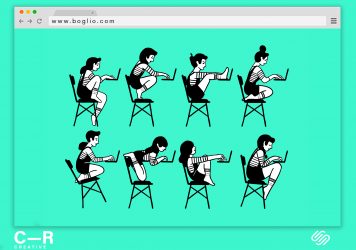
Surviving the perils of flying creatively solo is tough. In the fourth instalment of a new series supporting artists through the new normal, Laurène Boglio observes the world’s subtle shifts.
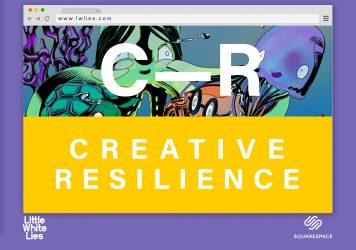
In a brand new series, produced in partnership with Squarespace, Little White Lies and Huck spotlight artists and makers as they adapt to life under lockdown and an uncertain future.
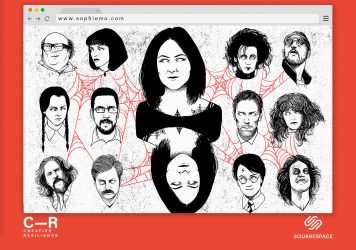
In the second part of a new series supporting artists through these testing times, we commissioned Sophie Mo to make a special series of illustrations. She shares with us how she continues to carve out a creative identity.